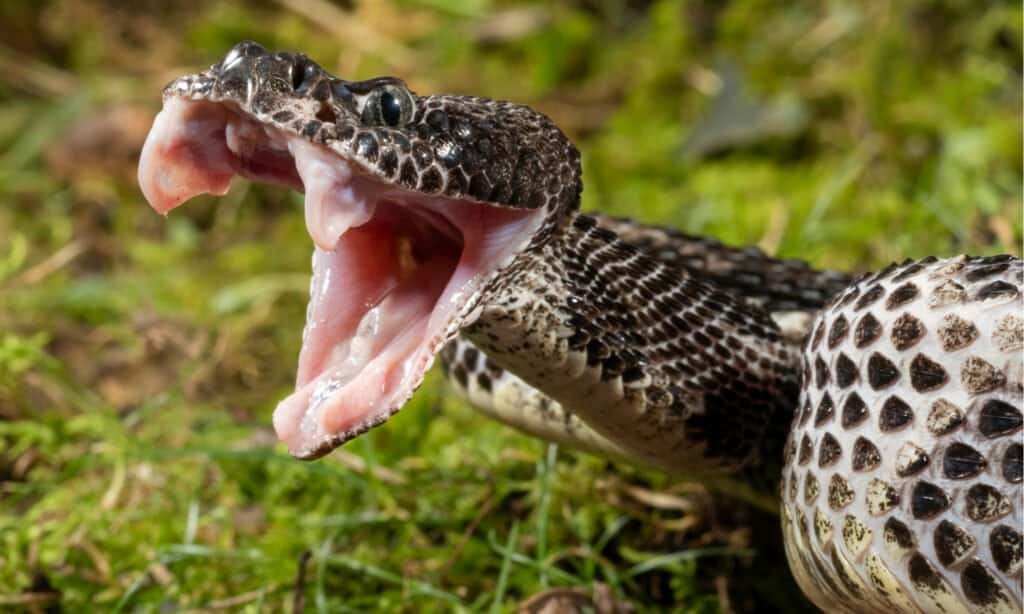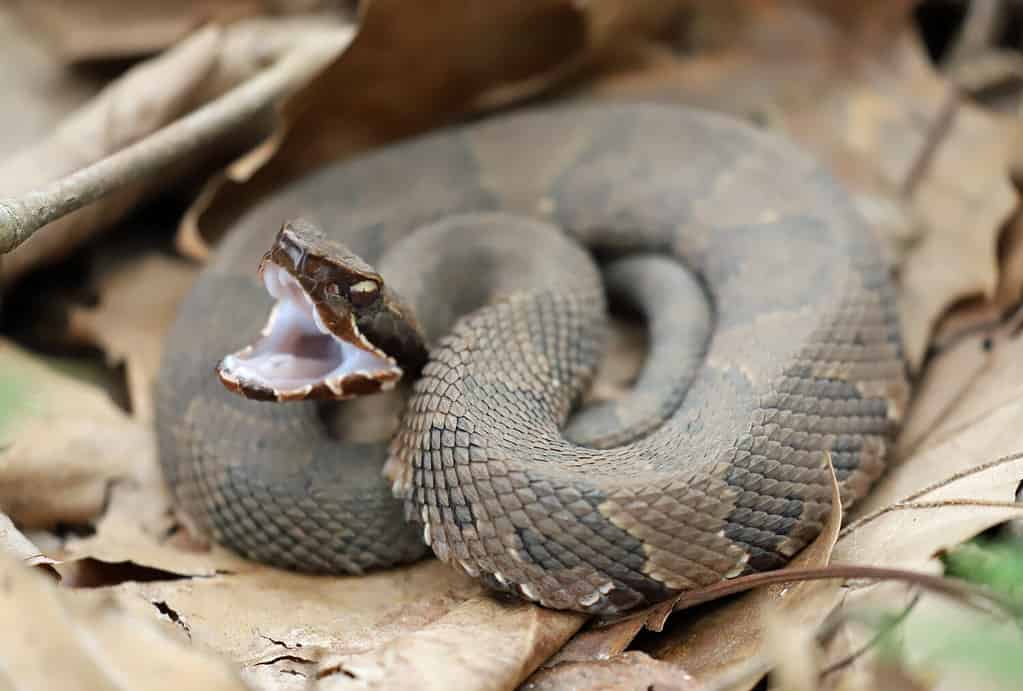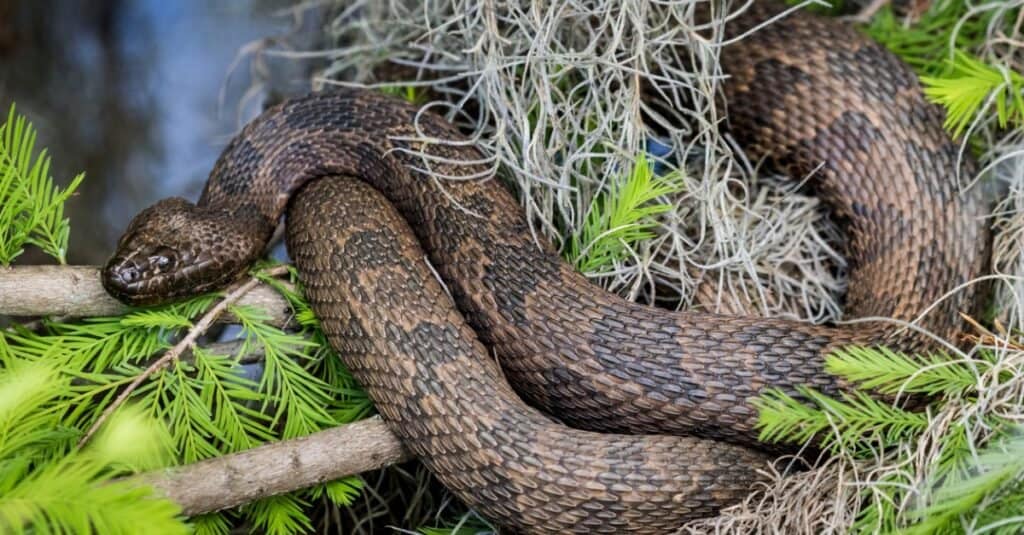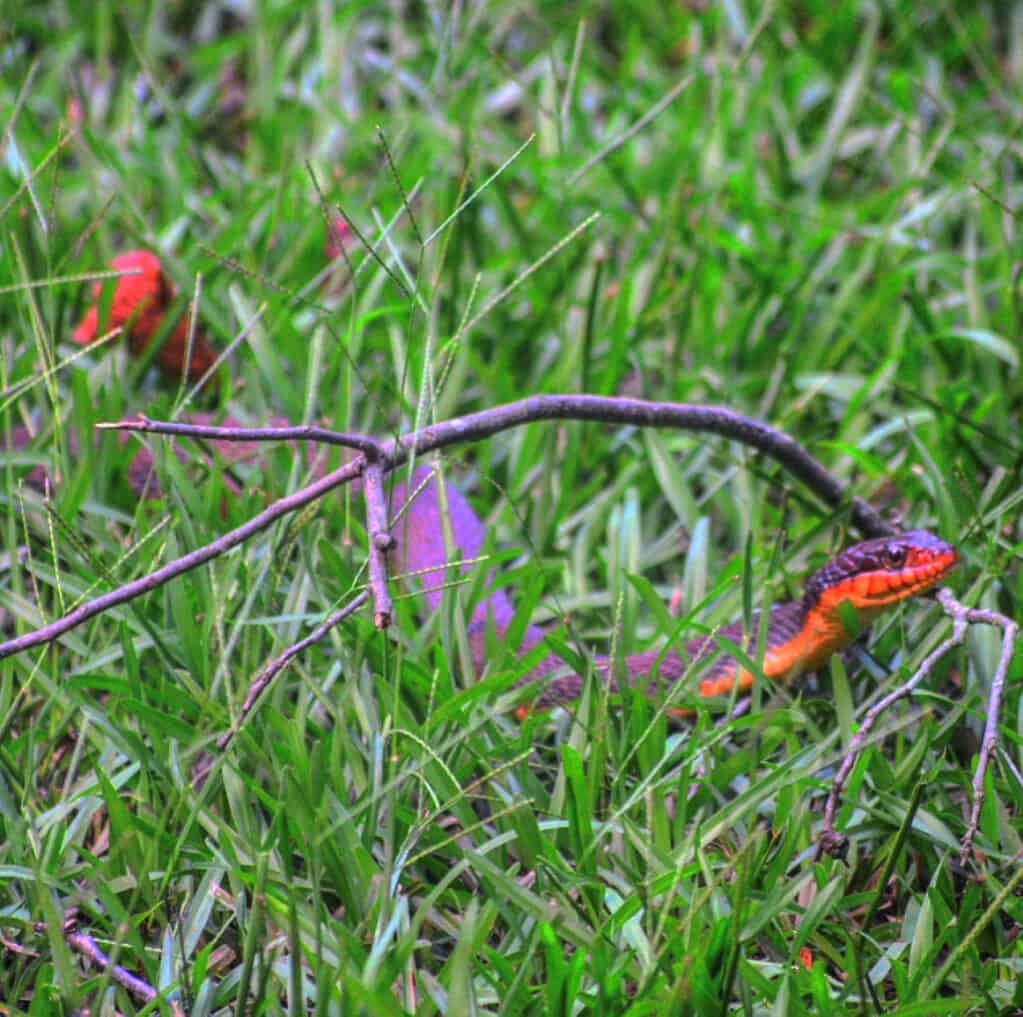The Chattahoochee River, which silently snakes through the center of Georgia, is home to several fascinating and terrifying serpents. The mysterious reptiles that call this famous stream home are essential to maintaining the ecosystem’s delicate equilibrium. We’ll explore the fascinating world of these legless reptiles in this article. Let’s learn about the many species that live in the Chattahoochee and what makes them special!

What Is the Chattahoochee River?
The Chattahoochee River is a significant waterway in the Southeastern United States. It flows mostly through the state of Georgia. It starts in the Blue Ridge Mountains of north Georgia and travels south for another 430 miles to the Gulf of Mexico. The river has always played a significant role in the local ecosystem because of the many different species it supports through its provision of water.
Its woods, marshes, and riparian zones are perfect habitats for many different kinds of flora and fauna, including snakes. Trout, bass, and catfish attract anglers from all over the world to its rivers.
The Chattahoochee River also holds cultural significance for the area. Fishing, boating, hiking, and other outdoor activities abound, making it a favorite among nature enthusiasts and thrill-seekers.
However, the river has challenges such as pollution and habitat loss as a result of urbanization and agricultural operations. To keep this important river healthy and save the animals that live there, conservation measures are crucial.
By employing sustainable practices and good environmental management, we can save the Chattahoochee River so that future generations can benefit from its ecological, cultural, and recreational treasures. With all of that in mind, let’s look at some snakes that live in the Chattahoochee River.
1. Eastern Diamondback Rattlesnake
The Chattahoochee River area and much of the southeast of the United States are home to the fearsome and venomous eastern diamondback rattlesnake. Although it is one of the biggest venomous snakes in North America, luckily it does not deliberately target humans and is more likely to flee if a human ventures to close.
These rattlesnakes are mostly in the Chattahoochee River basin in the southern coastal plains, which include areas of Georgia, Alabama, Florida, and South Carolina. Longleaf pine forests, coastal scrublands, and sandhills are among the variety of environments they choose because they offer them plenty of cover and access to food.
The eastern diamondback’s venom is potent and aids in subduing its prey, which includes small mammals like rats, rabbits, and even birds. Their venom also serves as a defensive mechanism against potential threats. Their distinct feature, the rattle, is a unique adaptation that alerts other animals to their presence when threatened.
With their large size, diamond-shaped patterns on their backs, and distinctive rattling sound, these snakes are easily identifiable. Their coloration helps them blend well with their surroundings, enhancing their ability to ambush prey effectively.
However, despite their venomous nature, these snakes are often misunderstood and unfairly feared. They are reclusive by nature and will usually avoid encounters with humans when given the chance.
Conservation efforts are essential to protect these magnificent creatures, as their populations have declined due to habitat loss, human persecution, and road mortality. By understanding and respecting their role in the ecosystem, we can foster coexistence and appreciation for this iconic reptile of the Chattahoochee River region.

Eastern diamondback rattlesnakes’ venom is potent and aids in subduing its prey.
©Chase D’animulls/Shutterstock.com
2. Timber Rattlesnake
Native to the eastern United States, especially the areas close to the Chattahoochee River, the venomous timber rattlesnake is a formidable and fascinating animal. When attacked, this interesting reptile utilizes its characteristic rattle on its tail to send a warning signal.
The Chattahoochee River’s forested banks, rocky hillsides, and deciduous woods are where you’ll commonly find timber rattlesnakes. Because they offer sufficient shelter for eating and hibernating during the winter months, they tend to favor these settings.
The timber rattlesnake is a venomous and dangerous snake that uses its venom to paralyze and consume its prey. Their prey consists mostly of tiny rodents and rabbits. They are not aggressive toward people, though, and if given the chance, they normally try to escape.
The timber rattlesnake is distinguished by its exceptional capacity to control the number of rattles on its tail. A new segment grows every time the snake sheds a layer of skin. These rattles make a sound that one can hear from a distance. It acts as a warning to any prospective predators or curious humans.
Despite being venomous and quite dangerous, these snakes are crucial to the ecosystem. They help control rodent populations, maintaining a balance in nature. Unfortunately, timber rattlesnakes face threats from habitat loss, road mortality, and human persecution, which highlights the importance of conservation efforts to protect these fascinating and ecologically valuable reptiles in the Chattahoochee River region.

Timber rattlesnakes are dangerous but typically elusive.
©Joe McDonald/Shutterstock.com
3. Copperhead
In an article about snakes in the Chattahoochee River, you just can’t forget about the legendary copperhead! The Chattahoochee River basin and most of the eastern and southern United States are home to the dangerous copperhead snake. The snake is easily identifiable thanks to its hourglass-shaped body stripes and coppery-colored head.
In addition to woodlands and meadows, the Chattahoochee River and other surrounding water sources may also support copperhead populations. Because they are expert climbers and swimmers, one may spot them lounging on rocks or tree branches during the warmer months.
Like other venomous snakes, the copperhead’s venom serves to sedate its prey. Its prey is mostly comprised of small rodents and amphibians. Despite having extremely strong venom, copperheads are usually not aggressive toward people and will generally decide to flee when confronted.
Despite being venomous, copperheads are crucial to the ecosystem of the areas along the Chattahoochee River because they aid in regulating rodent populations. Like many other snake species, they are at risk from habitat deterioration and human persecution. Humans must refrain from harming these snakes or encroaching on their natural environment for them to survive and coexist with human activities.

The copperhead is easily identifiable due to its hourglass-shaped body stripes and coppery-colored head.
©Mark_Kostich/Shutterstock.com
4. Water Moccasin
Water moccasins, also known as the cottonmouth snake, are a type of venomous snake that lives in the southern region of the United States. It can also be found in the Chattahoochee River. This peculiar and dangerous snake is known for its white-colored lips. It displays its lips when it feels threatened by a potential predator. These fascinating snakes live in and around the river. They are found in abundance in areas where the waters and still and don’t have much flow. They are incredible and fast swimmers that can easily hunt fish and amphibians through the river, as well as small creatures on dry land.
The water moccasin is venomous, and both humans and other animals might die from its venom effects. They are not typically antagonistic, but if trapped or threatened, they may turn hostile and defensive.
The water moccasin’s versatility means it can thrive in both freshwater and saltwater environments. In contrast to other snakes, these snakes can adjust to different levels of salt.
The numbers of fish and amphibians are kept in check thanks to these snakes, making them an essential part of river ecosystems. However, the degradation of their habitats and the killing of these creatures out of fear are threatening the survival of these species.
Understanding the significance of water moccasins to the Chattahoochee River’s sensitive environment would considerably aid conservation efforts. Fostering coexistence and ensuring their survival will be much easier if these amazing reptiles are treated with the greatest care and caution in their natural environment.

Water moccasins have a unique white mouth that distinguishes them from other snakes.
©KF2017/Shutterstock.com
5. Brown Watersnake
The Chattahoochee River and its surrounding habitats are home to several populations of the nonvenomous brown watersnake. The brown watersnake, when compared to its venomous relatives, is completely non-threatening to people and does not produce venom.
This snake is aptly named, as it comes in a variety of shades of brown that allow it to blend in with the river’s flora and somewhat murky, muddy waters. Though the specific designs may vary, these marks are often darker than the rest of the snake’s scales.
The brown watersnake is predominantly aquatic. It can be observed in slow-moving or still waters of the river, such as marshes, swamps, and shallow ponds. They are excellent swimmers and are often seen gracefully gliding through the water. They also can be seen climbing low branches or vegetation near the water’s edge.
What makes the brown watersnake unique is its ability to consume a diverse diet. They are opportunistic predators and prey on fish, frogs, small mammals, and even other snakes if necessary. Their adaptability to different food sources contributes to their success as a species.
Despite their harmless nature, brown watersnakes are sometimes mistaken for venomous snakes due to their appearance. This misunderstanding has led to unnecessary fear and persecution. By recognizing their non-threatening nature and appreciating their role in the ecosystem as natural pest controllers, we can foster a sense of coexistence and respect for these intriguing reptiles in the Chattahoochee River region.

Brown watersnakes are completely non-venomous.
©iStock.com/csraphotography
6. Red-Bellied Watersnake
The non-venomous red-bellied watersnake lives in the Chattahoochee River and other streams in the southeast of the United States. This species of watersnake is easily recognized by the pink or red coloring on its underside, as suggested by its name.
This species flourishes in settings that are semi-aquatic and have slow or motionless water flow. Such areas include the marshes, swamps, and riverbanks of the Chattahoochee River. Because they live in water and have superb swimming skills, these snakes may easily catch fish, amphibians, and other small aquatic prey.
What sets the red-bellied watersnake apart is its unique behavior when threatened. Rather than resorting to biting like venomous snakes, it often flattens its body and releases a foul-smelling musk as a defense mechanism. This tactic is usually enough to deter potential predators.
The red-bellied watersnake’s appearance can vary, but it typically has a dark-colored body with reddish-brown bands along its back. Its coloration helps it blend in with the muddy riverbank and underwater vegetation, providing excellent camouflage during hunting.
The red-bellied watersnake is safe for people to be around, despite its outward appearance that resembles a venomous snake. As all watersnakes are, these gentle snakes are crucial to maintaining the ecosystem of the Chattahoochee River. This is because of the control they have on fish and amphibian populations.

Red-bellied watersnakes are known for their unique coloration.
©iStock.com/Rachel Fleming
Summary of 6 Snakes of the Chattahoochee River
Here’s a recap of the six snake species we took a look at that can be found in and around the Chattahoochee River.
| Number | Snake | Type |
|---|---|---|
| 1 | Eastern Diamondback Rattlesnake | Venomous |
| 2 | Timber Rattlesnake | Venomous |
| 3 | Copperhead | Venomous |
| 4 | Water Moccasin | Venomous |
| 5 | Brown Watersnake | Non-venomous |
| 6 | Red-Bellied Watersnake | Non-venomous |
Discover the "Monster" Snake 5X Bigger than an Anaconda
Every day A-Z Animals sends out some of the most incredible facts in the world from our free newsletter. Want to discover the 10 most beautiful snakes in the world, a "snake island" where you're never more than 3 feet from danger, or a "monster" snake 5X larger than an anaconda? Then sign up right now and you'll start receiving our daily newsletter absolutely free.
Thank you for reading! Have some feedback for us? Contact the AZ Animals editorial team.








